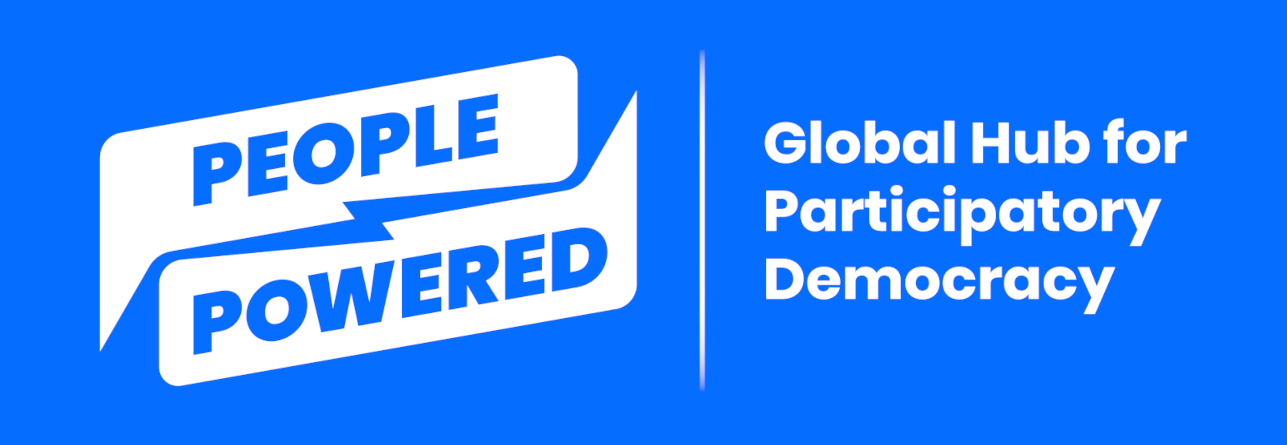Citizens’ assemblies: What determines if they are ‘transformative’?
/Marjan Ehsassi
At our final research-to-practice talk, we invited Marjan Ehsassi, the Future of Democracy Fellow at the Berggruen Institute, to share her insights into a question many practitioners don’t think too much about: Do participants in citizens’ assemblies – which are becoming increasingly popular in Europe – find the experience beneficial? And if not, why not? The talk was so stimulating that we offer an edited transcript below:
People often ask me how I ended up studying public deliberation. Mostly, it was because I wanted to understand why citizens are so disengaged from their political institutions, and then to identify solutions. And that’s how I discovered the potential of citizens’ assemblies.
A 2019 survey conducted by the Organization for Economic Cooperation and Development (OECD) asked citizens from different countries whether they feel government incorporates the views of people like them when designing or reforming public benefits. An overwhelming number of people in most of the countries said no. Meanwhile, the University of Maryland (USA) asked a sample of Americans if they felt elections were adequate to make them feel represented in policymaking. And despite the United States’ claim of being the role model for democracy, 88% of respondents said elections aren’t enough. The same survey showed a majority of people who feel that the government operates to benefit a few big interests, vs. all people. Finally, when asked whether they thought there was an adequate system for their voices to be heard, 83% of those surveyed said no.
A citizen's’ assembly at work, as a participant holds up her vote. Photo credit: Katrin Baumann / CESE
Considering all this troubling data, bold and innovative changemakers have been searching for impactful solutions. And there has been an explosion in democratic innovations worldwide – with a lot of progress on citizens’ assemblies, mainly in Europe. The OECD has tracked over 600 examples of these platforms, which it describes as a “deliberative wave.”
What makes citizens’ assemblies unique?
So, what are the elements that characterize a citizens’ assembly? Typically, they have five elements:
Participants who are representative of the overall population, selected via sortition (democratic lottery or random selection).
A learning phase, during which balanced information is shared through documents and meetings with subject-matter experts.
Deliberation, followed by the emergence of considered judgment.
The development of recommendations towards a final report.
Accountability, follow-up by the government and policy outcomes.
What a citizens’ assembly is not is an educational campaign, a panel discussion, a focus group or a consultation with the usual suspects. The benefits of a true citizens’ assembly is better decision-making, more effective and equitable policies, and greater legitimacy for government at a time of heightened polarization.
However, one aspect that I find is not examined closely is “what’s in it for citizens? What is the benefit for citizens who agree to participate in this very time-intensive exercise? Instead, we either ignore or often take it for granted that citizens will leave the experience feeling more engaged with their political institutions.
My research on this is largely informed by the six citizens’ assemblies in which I have been involved:
Note that the Belgian assembly, “We Need to Talk,” is the only one with a bottoms-up approach; it’s led by CSOs, not government.
What makes citizens’ assemblies effective?
In most cases, I examine design integrity, the composition of the assembly, process and deliberation, and government presence and promise. I was particularly interested in understanding why citizens disengage from their political institutions. So, I created a definition for an engaged civic and political citizen, with five characteristics:
Epistemic growth and learning.
Social cohesion and connectedness.
Effervescence and enthusiasm.
Political interest and activity.
Consequential voice and a sense of meaningful input.This one is key for me.
Organizers usually have the best of intentions, but there are seemingly small decisions made throughout the design and implementation process that can have a big impact. For example, it’s a good idea to allow participants to reflect and deliberate on their mandate before they start meeting with experts for the learning phase. I'm hearing more and more from participants that we say we want them to think outside the box, but then we present them with experts who immediately create frameworks around their thinking. Thus, it would be nice to give participants some space to do some visioning for themselves before we introduce them to experts.
Another good way to start a citizens’ assembly, which helps build a sense of connectedness, is to first define where participants are already in consensus, particularly when the issue of focus is highly emotional. One of the strengths of the recent French citizens’ assembly on the end of life, for which I was a guarantor, was that it started with building consensus. It allowed participants to begin by building trust, so that they were later able to tackle issues that were divisive. Other simple suggestions are to set aside time for group lunches or to go on site visits, both to better understand the gravity of the question before them, but also to build community.
A side, but important, observation is that my research has shown that frequently, trust in political institutions and leaders decreases because of participation—which, of course, is not the outcome we want. However, I wonder sometimes if our focus on trust is misplaced; instead, I think we should look more at whether participants feel differently afterward about their role and place within their democracy. My research suggests that participation awakens a sense of civic duty and, at a time of pervasive polarization, this is exactly the kind of skills and characteristics we want to promote.
What is the optimal degree of government presence?
Equally important are how the topics for citizens’ assemblies are chosen and what happens to their recommendations. Related to the first point, I will say this: To the extent that we can, we should make sure that the topics are selected by the citizens, not the government. When citizens select the topics for assemblies, it elevates their sense that their input is consequential. For example, as successful as I consider the French citizens’ convention on the end of life, I think it would have been much stronger if the people had selected the topic. In light of the protests in France, a good question to ask is, why didn’t the government choose to have a citizens’ assembly on pension reform?
The right degree of government involvement throughout the process is also worth considering seriously. When I speak to participants, they want to have their independence; they do not want government officials present too much of the time. It’s important for government officials to be present at the beginning, to define roles and set expectations, and then at the end to receive the recommendations and explain what happens next. The challenge is to find a good balance between government being present, and overly present.
As for what is done with the recommendations that come out of citizens’ assemblies, it may surprise you to learn that my research suggests that citizens don't mind if their mandate is consultative. Frankly, they don’t expect their recommendations to be binding on government and are just happy to be asked to provide input. However, they do expect follow-up and that the government pays attention to their recommendations and responds within a reasonable time frame (usually six months).
[Note, Silva Cervellini from Delibera Brasil, which helps organize smaller citizen juries or mini-publics, contributed to the discussion with this suggestion: When participants have developed a preliminary version of their recommendations, we send it to the responsible government authorities, so they have the chance to study them. Then, when the citizen participants are ready to develop their final recommendations, the government officials present their comments and concerns. We found this is good for both sides, because the government felt more responsible for doing something with the recommendations and the citizens better understood what some of the problems might be.]
My conclusion? There is very little doubt that deliberative platforms such as citizens’ assemblies can be transformative. But in practice, they are sometimes not. It's critical to separate the promise of citizens’ assemblies from their practice. We cannot make assumptions and must take the time to incorporate a citizen-centric agenda at every step in the design and implementation of deliberative platforms.
Note: One of the attendees at the research-to-practice talk asked how to get a government on board with the need for a citizens’ assembly, particularly when resources have not yet been budgeted. Both Marjan and Silva agreed this is a challenge. The goal is to get to where France is today, which has a government institution charged with leading national debates and participatory initiatives, which is now recognized as the “third assembly” of the republic. In the absence of that, however, another innovative solution is the recently launched Democratic Action Fund. Its central idea is to ask governments, at all levels, to set aside 5-10% of the budget for elections and set up a fund that allows the implementation of deliberative platforms at any level.







